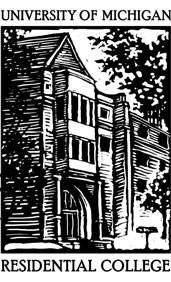This morning we started our day with a wonderful breakfast at the hotel before heading off to the town administration offices to meet with the town mayor and a city representative. We quickly discussed the town’s history, economy, and schools before walking across the river, towards the town museum, only a ten-minute walk away. Upon arriving, we were warmly greeted by the hotel staff before getting a very thorough guided tour of the museum – five or six rooms about the local environment, culture, and history. Then we were given a hardy snack of belinis, biscuits, tea, and candy before setting to work.
My job for the afternoon was to photograph old Russian coins. I worked with Tatiana and a huge drawer of coins dating back from 1710 and covering about a century and a half. I started off photographing Denga, a coin no longer in use but worth about half a ruble. The museum has a specimen of Dengas from almost every year between 1707 and the mid 1850s. I photographed both sides of over one hundred Dengas, next to their labels, while Tatiana catalogued them by hand on a sheet of printer paper. I got the impression that the museum is trying to be more technologically inclined, hence why we were there to help digitize their archives, so I was very surprised to see Tatiana cataloguing by hand rather than typing it on a computer.
After a short break for lunch, I returned to the small desk where I joined Tatiana and continued to photograph the coins. As the years progressed, I noticed how not only did the design of the coins change depending on the Tsar, but also the quality of the coin and the amount of detail increased considerably throughout the years due to the improved technology. The first coin, from 1707, was established under Tsar Peter I and it was very hard to make out the design. The next coin in their collection is from 1730 and had the Russian symbol, the two-headed eagle on the back, but it is hardly recognizable due to years of use and rubbing down. By 1749, the eagle is not only recognizable, but also displays detail in individual feathers on its wings. 1767 is the first coin they have with the emblem of Catherine the Great represented by a large, script E with a crown above it. This year, the Denga changed the front of the coin from the usual “ДЕНГА” to a horse and rider. In 1797 the coin changed for the last time to have a cursive П with a royal crown for Emperor Paul on it on one side and “1 ДЕНГA” written on the other. Next I worked with one, two, and five Kopeck coins from as early as 1710 that grew in size as they grew in value. The last coin I worked with, which must be rare since the museum only had four of them, was the Polushka, worth about a quarter of a ruble, were introduced in 1700 by Peter the Great and were used until 1917.
The museum, although rather small, has a plethora of information about all aspects of life in and around Vytegra. First we learned about Russian holiday of Maclentsya through a cultural presentation by one of the people who works at the museum. Then we toured the two rooms with displays of many animals that live in and around Vytegra – swans, owls, a boar, a moose, and a Russian wolverine, just to name a few. We also learned about the rocks and kinds of stone found around the area, including limestone, which is prevelent in my hometown of Austin. Many houses, including my own, is made out of limestone and it was interesting to see that Vytegra and Austin, although having very differing landscapes, have soemthing in common. The three rooms about the history of Vytegra were my personal favorites. Like we learned in class, the citizens of provincial Russia are very proud of their culture and history, and it showed in the history displays. The exhibit was in chronological order, so we stared with learning about the role of the church and religion in the area, the fashion, the money, the culture, and the economy of the time. Next was the soviet era where we reviewed from what we learned in class about how the Nazis never were able to reach Vytegra, but did reach a nearby town in the same province.
From the extremely detailed displays in the museum and the welcoming women who work there, it is obvious that the people from Vytegra are very proud of their history and culture. For such a small town, Vytegra has four museums, which is more that most American cities of that size have. It is reassuring to see that the people of Vytegra put so much effort into preserving their culture and history and I can only hope that Americans can strive for the same.


No comments:
Post a Comment